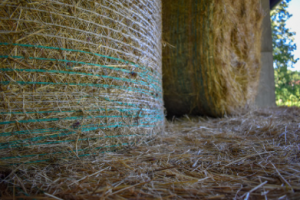Baling twines, also known as baling thread or sisal twines, is fine-threaded plastic or metal sisal typically woven into a cloth material. It is powerful, able to withstand the pressure exerted on it by the weight of the fabric or the contents of the quilt itself. It means that if you need a very strong, long-lasting sisal, it is best to use a baling twine. A few other benefits to using baling threads over other types of threading include:
 It can be used for decorative quilting – Baling twines treated with lead will have more rich colours because of the lead content of the plastic. However, it can also be used as a decorative quilt binding agent, using a treated thread similar to the baling twine. It will produce quilting similar to that produced with flat lead ropes but will be more robust and more durable. The drawback to using baling twine treated with lead is that it is not stained resistant.
It can be used for decorative quilting – Baling twines treated with lead will have more rich colours because of the lead content of the plastic. However, it can also be used as a decorative quilt binding agent, using a treated thread similar to the baling twine. It will produce quilting similar to that produced with flat lead ropes but will be more robust and more durable. The drawback to using baling twine treated with lead is that it is not stained resistant.
Baling twines can be used for tying duct tape to prevent the adhesive from coming off. It is a great idea when making costumes and other such costumes that need to have the clothes hold up against a lot of abuse, including being washed repeatedly. To prevent the adhesive from coming off, try using baling twine with white coloured ends. White ends will make it harder for the adhesive to come off, and it will last longer before needing to be reapplied. Because these types of halters can be pretty heavy, you may need help from someone to get it appropriately tied.
For more delicate items, like blankets and sisal blankets, you might consider using a baling twine in Adelaide instead. It is a large piece of cloth that has been made into a bale. Bales can be wrapped around heavier items and are more potent than standard bales. This type of baling twine makes an excellent material for bales that will be washed often, as they will not tear or fray. Because these types of blankets tend to be more expensive than typical bales, it is wise to purchase them early to save money and buy larger quantities.
It is important to note that not all sisal, chenille or Australian buckskin are appropriate for baling twine. Not only is there a higher risk of burning with this type of bale, but this type of material is not as flexible as other materials. It includes bales produced from goat hair, wool, and other natural materials. An osprey is an animal that is raised specifically to produce high-quality sisal and chenille material. If you are having problems getting your birdies to lay bales on their own, it may be because they have a sensitive digestive system or some other issue. If this is the case, it is possible that an osprey would make the perfect solution.
You should also know that being an osprey does not mean that your birds will necessarily come back to the same area once nesting again. It is widespread for an osprey to travel from one bird household to another when it is time for the baby to come out. By purchasing one of these nesting materials, you will likely keep your bird population thriving no matter what.
Another thing to consider is the safety of the baling twine itself. A baling twine should be made out of a very tough metal that is safe for humans to use and will not cause any problems during the process of nesting. There is no reason to worry about the safety of this type of nesting material when you are involved in an osprey nesting material recycling program. It is one of the reasons why every nest recycling program should include this type of baling twine.
To conclude, it is clear that using the baling twine as part of an osprey breeding program is very beneficial. The benefits go beyond the ability to save money, and it can also be used for other types of projects because it is so versatile. When properly used, the baling twine can be used for lead ropes, egg containers, western saddles, and any other project you can imagine. When you consider all of these factors, it is easy to see why this is an ideal material to use with any project you are interested in.